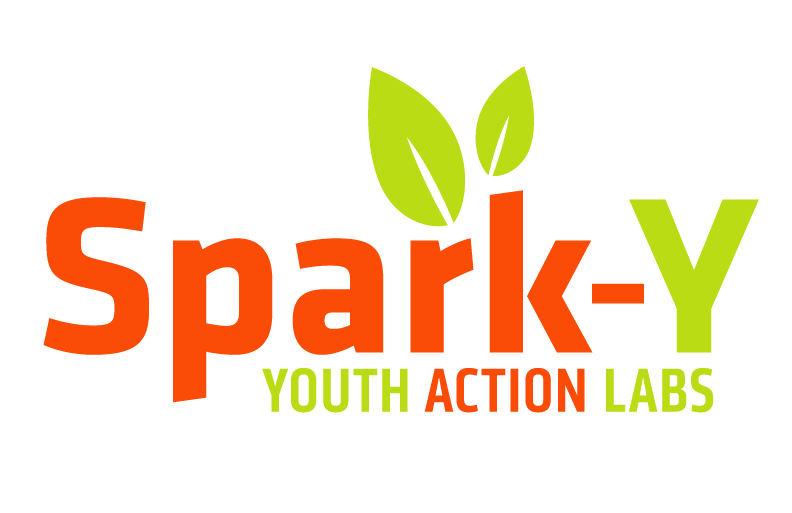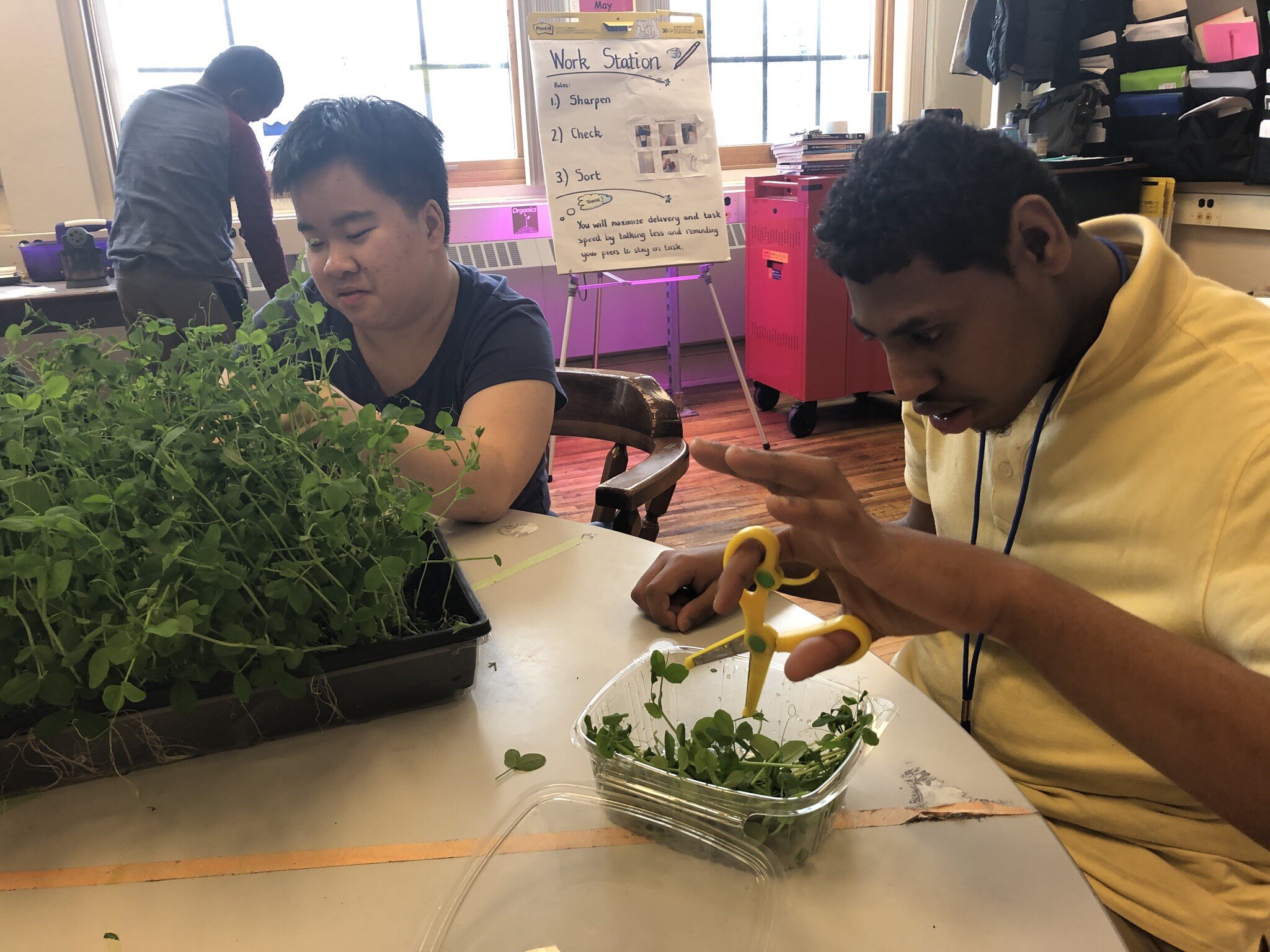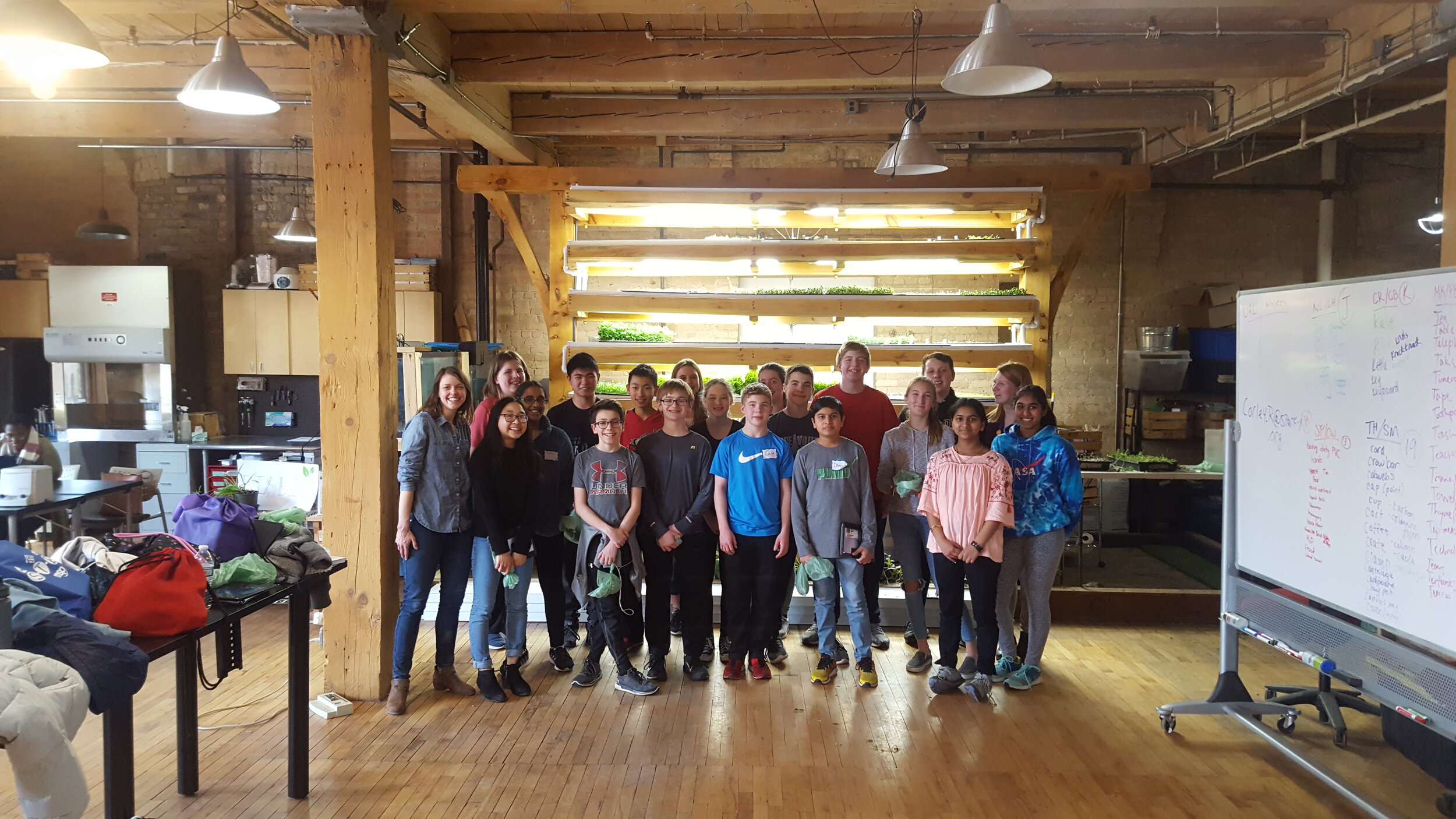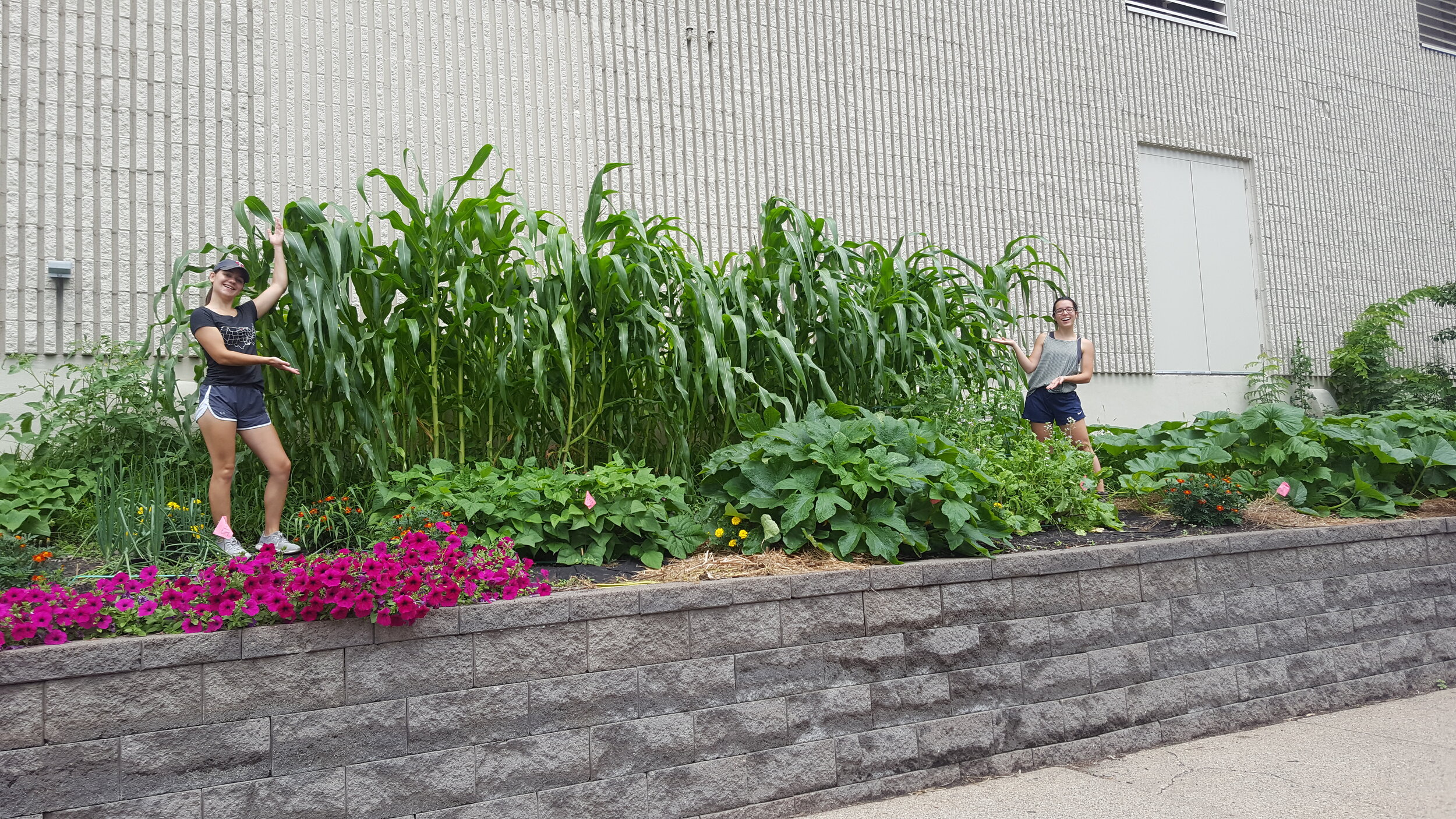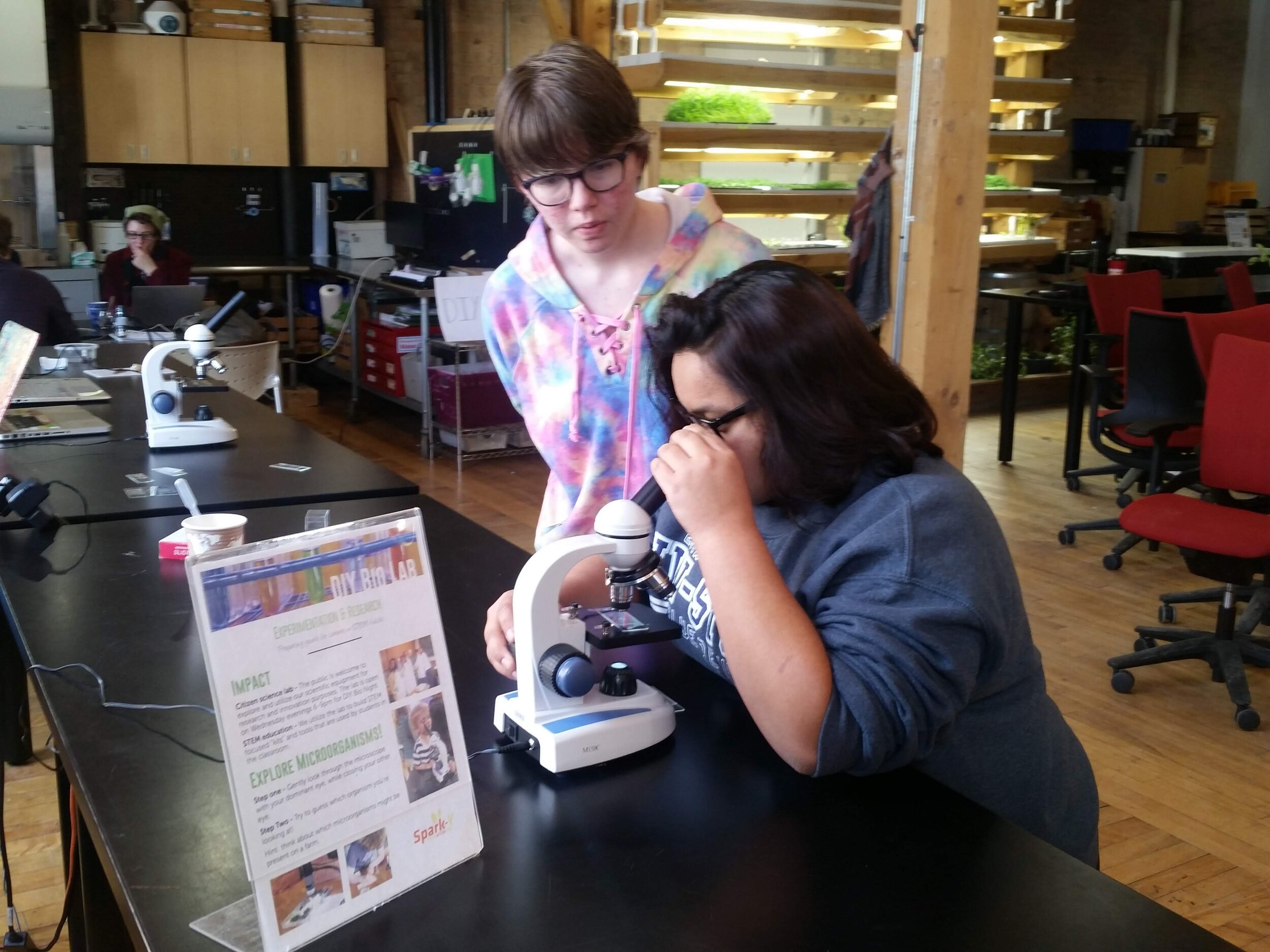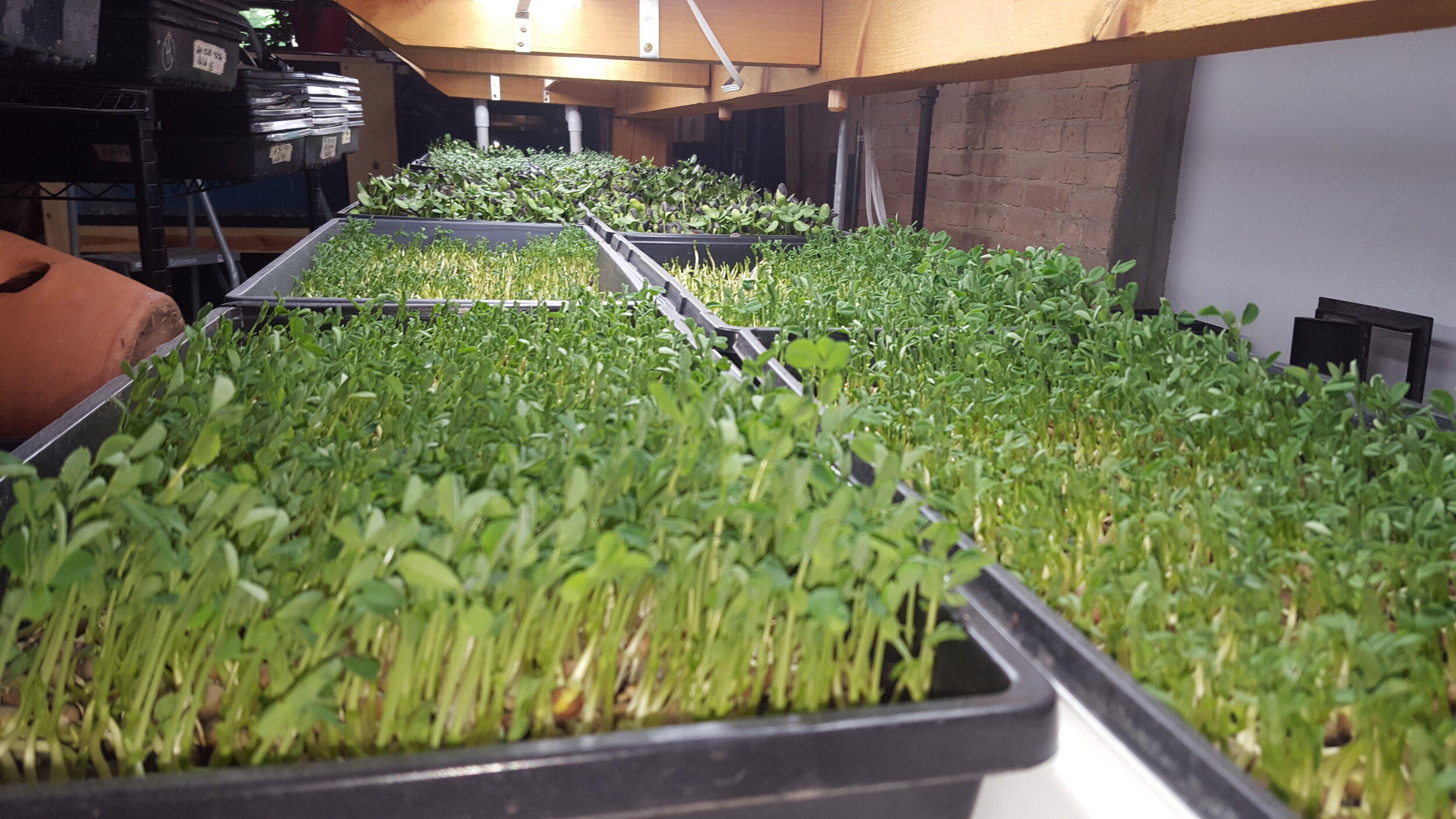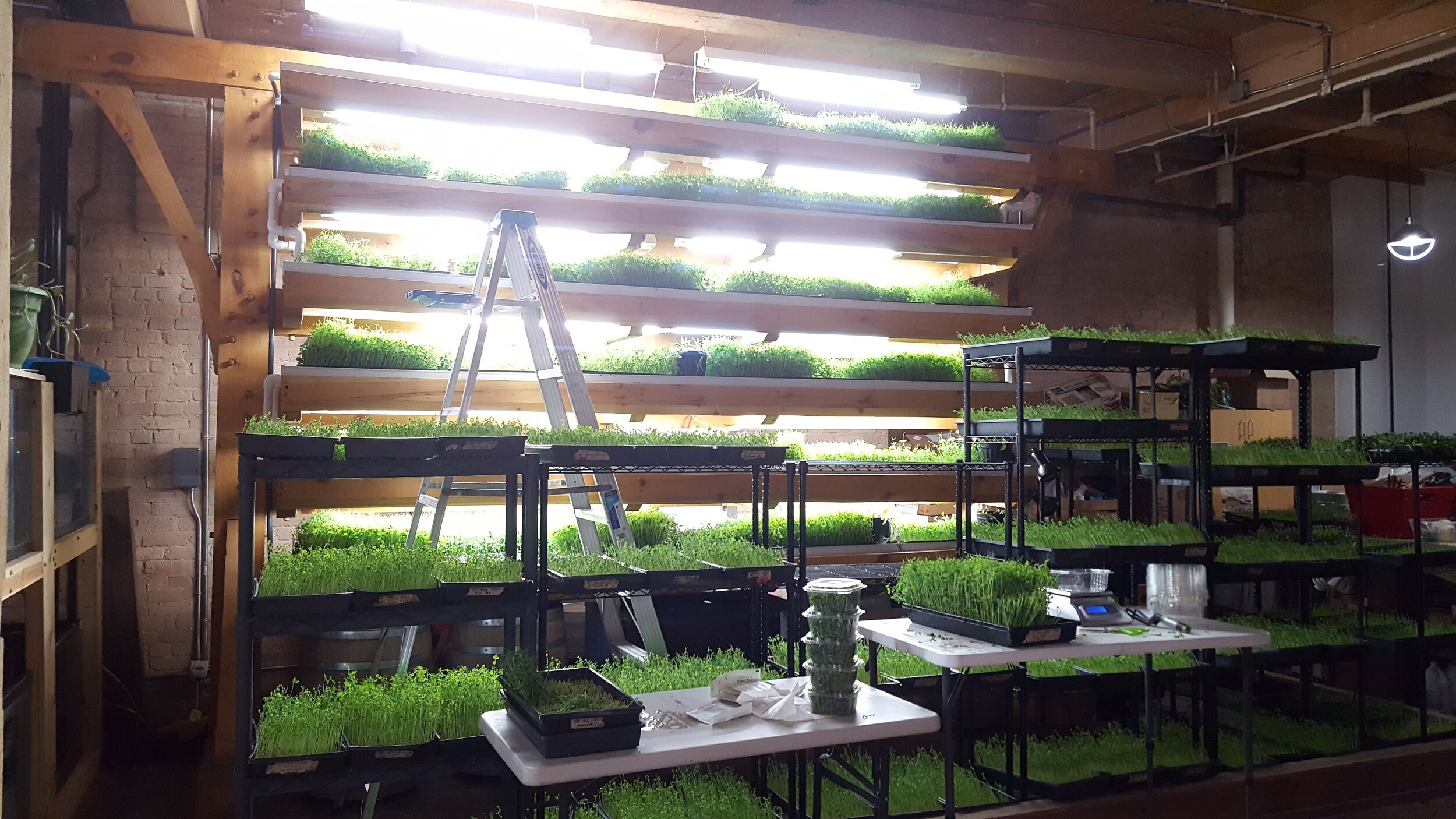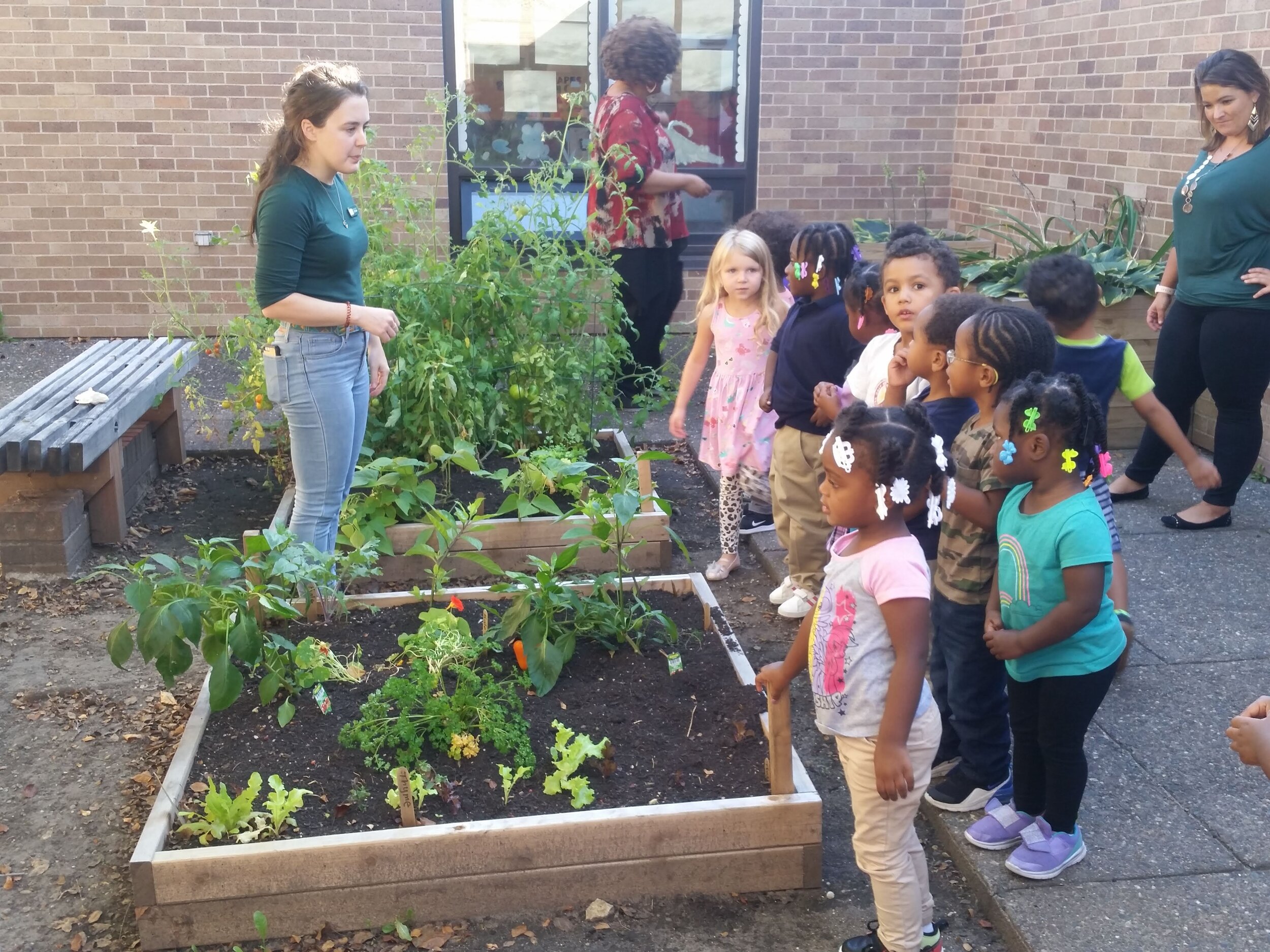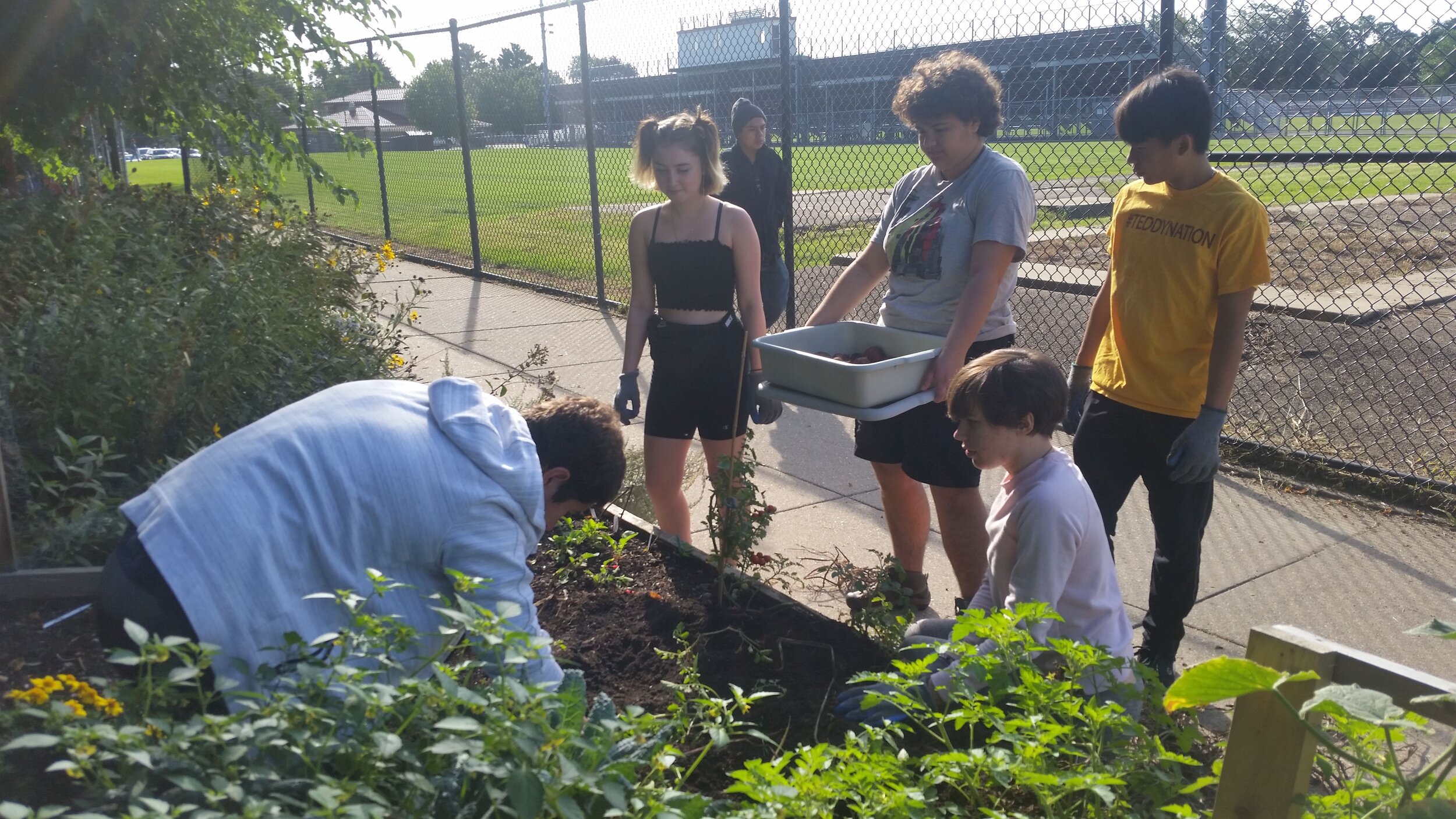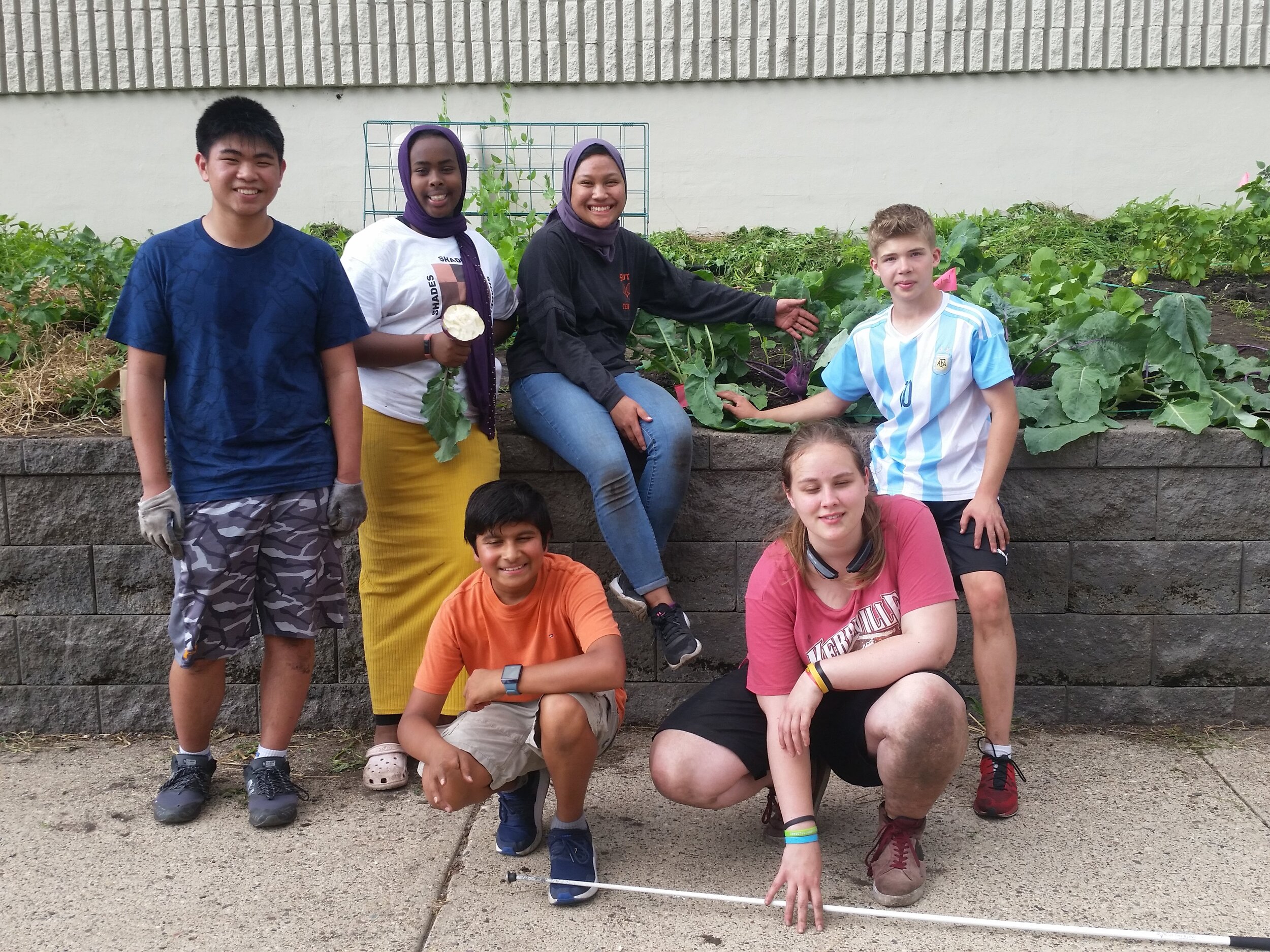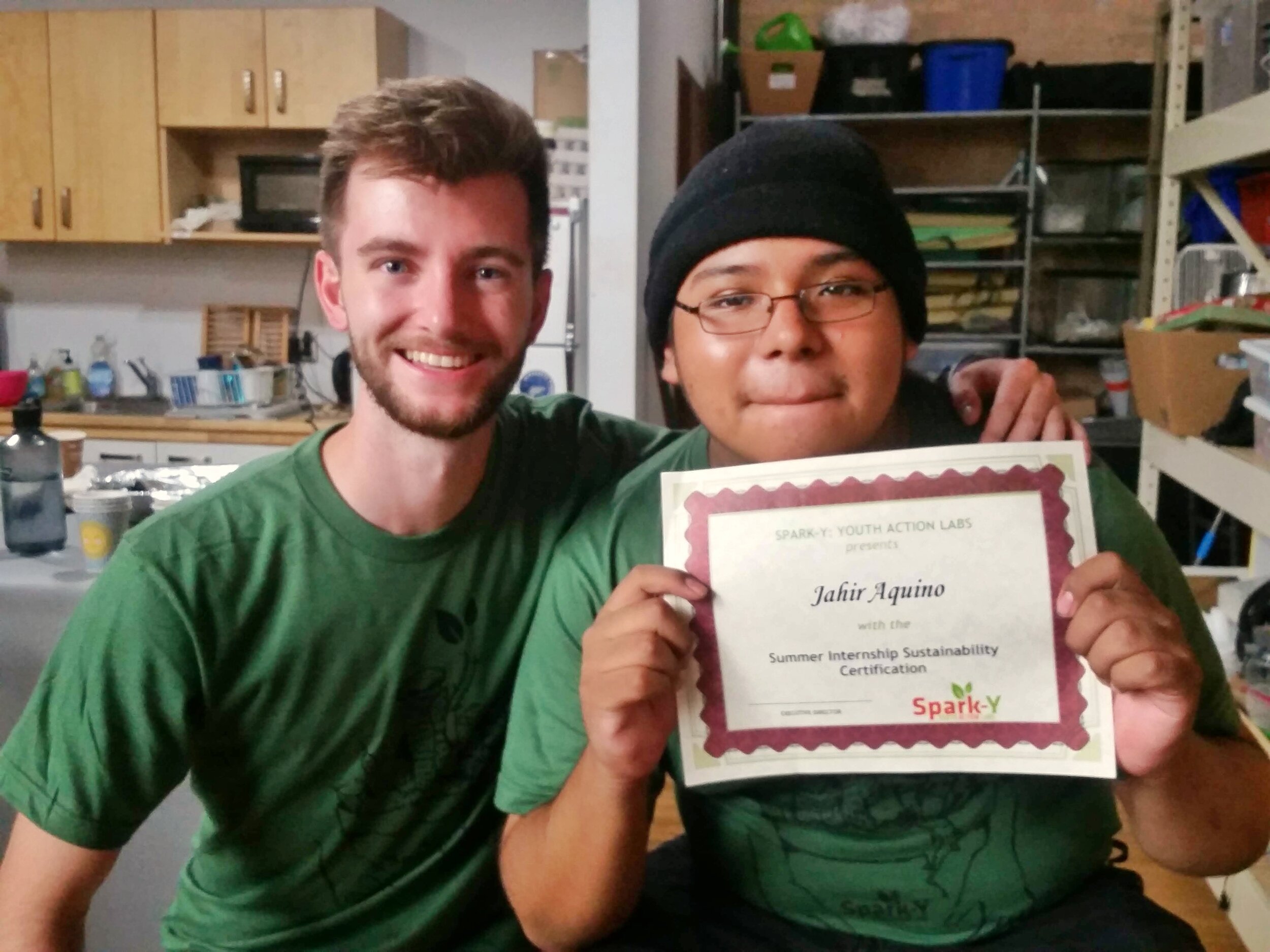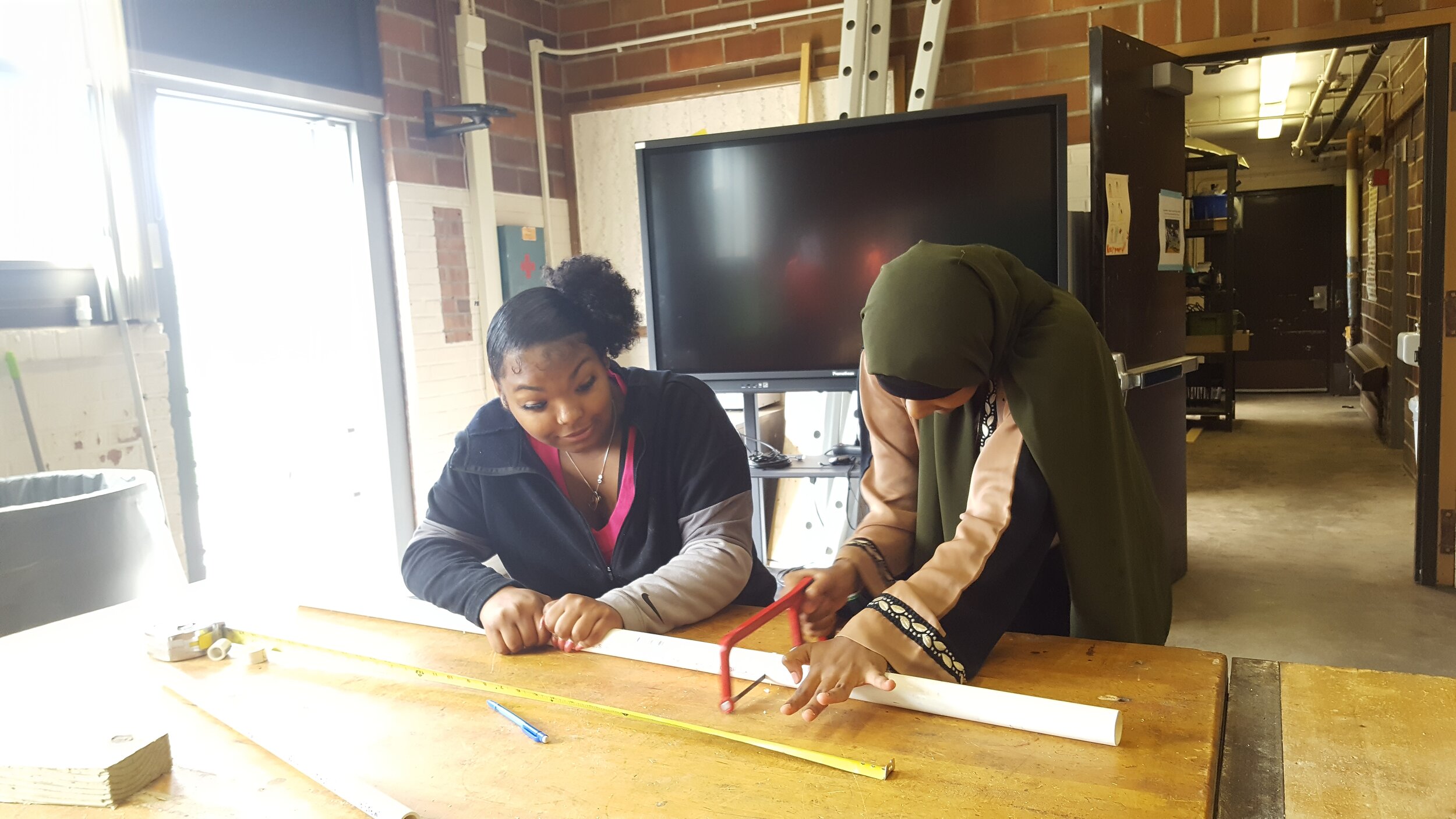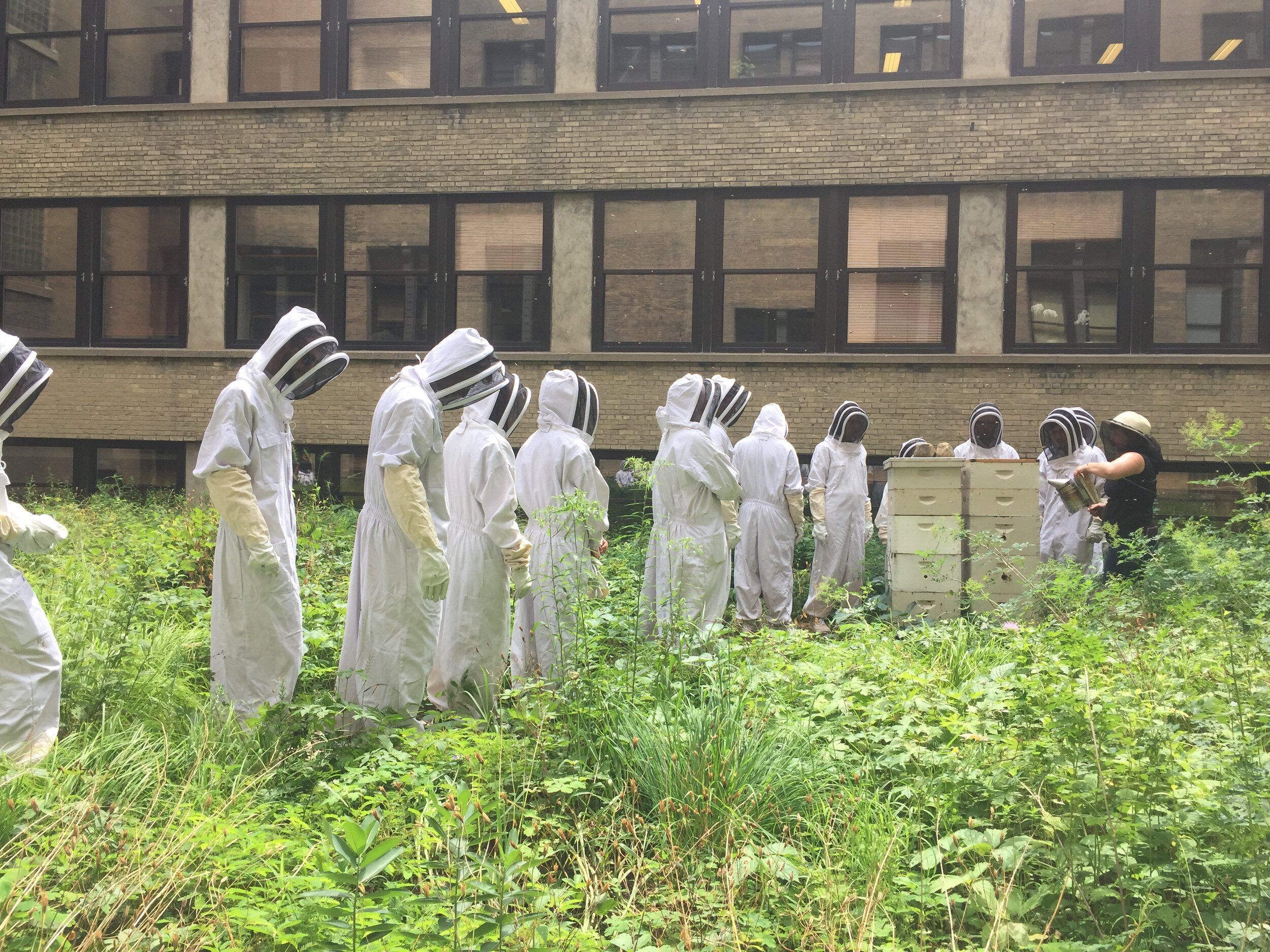The following blog post was written by Sarah Pilato,
Lead Sustainability Educator on Spark-Y school program partnership with Edison High School.
Two years ago, Spark-Y began an exhilarating new program in collaboration with Edison High School called the LEEF Pathway. LEEF (Leaders in Environmental and Entrepreneurial Futures) is a pathway that Edison students can choose to follow throughout their high school career which will allow them to gain knowledge that is necessary on their journey towards graduating, in a way that is innovative and experiential.
The idea was born from the successes of already established programs and from the hearts of our Spark-Y team that saw what a meaningful impact these programs were having on the Edison community. Students involved in previous years programming showed extremely high interest in the hands-on nature of the projects and increasing engagement and attendance as the year went on. What Spark-Y was able to create was an environment that catered to students who learned by doing. Activities, labs, and independent projects that have real-world outcomes are the cornerstones of our programs and we knew we had to find a way to expand those opportunities to include more students.
When the idea of LEEF was just budding (pun intended) it included our existing environmental science class known as EASYpro (Edible Agriculture School Yard Professionals) and LEEF Biology. Students taking these classes were using aquaponics systems to learn about plant and fish biology and ecosystems; gardens and greenhouses to learn about entrepreneurship and population studies; vermicompost to learn about closed-loop cycles and decomposition. Edison High School has so many amazing resources as a part of their Green Campus and not allowing students to utilize and learn from them would be a wasted opportunity. It is our goal to integrate these and other systems (such as the solar roof and rainwater catchment) into as many LEEF classes as possible since they provide such a wonderful hands-on way of showing how what’s learned in school can apply to real-life scenarios.
Lead Sustainability Educator, Sarah, teaching a group of EHS staff and students about the school’s aquaponic system, which was designed and built by EASYpro students.
Smaller scale aquaponic systems that are used in LEEF biology throughout the year.
Our pilot year of the LEEF Pathway seemed to be off to a great start! Students were excited and engaged, more and more were wanting to enroll in LEEF classes, and expansion of the program was becoming not only realistic, but necessary. It was time for us to really start sprouting!
The last two years have seen a lot of growth within the LEEF Pathway. What began as a simple pilot with just two classes now reaches across many departments at Edison High School. In addition to environmental science and biology, Spark-Y now collaborates with the science department in physics and chemistry; we have helped develop an environmental art class; and have begun a special education collaboration in addition to several other opportunities. (See the full list below if you are curious about all of the classes that Spark-Y partners with at Edison.)
EHS junior Ramel, and senior Fartun measure bamboo to be cut for pollinator houses
I feel so fortunate to have been a part of this process since the beginning. I spend much of my working time directly in Edison and get to see and work with many of the students currently going through the LEEF Pathway. Current EHS senior, Fartun, who took environmental science during first semester told us that it was her favorite class she’s taken this year because she loved working in the aquaponics lab rather than sitting at her desk all hour.
It is also very exciting for me to be the driving force behind some of the program expansions. This year is our first year of programming within Edison’s special education department and is probably the most fun I have with a class all week long. DCD teacher Ross Porter has opened up about the growth he has seen in his students this year saying “it’s extraordinary how excited they are to participate.” It’s clear to see that even small activities make a huge impact when students feel included in their community.
EHS students Kinnicki and Abdullahi harvesting pea microgreens that their class had grown.
My hopes for the future of the LEEF program are that we continue to find innovative and empowering ways to meet students where they are at. I hope to use this pathway to reinvigorate a love of learning in students who feel that they don’t fit perfectly into the current education paradigm, and to further encourage those who have already found their passions in life. I truly believe in this program and believe that it is an environment any student can feel successful and empowered in.
LEEF Pathway classes at Edison High School:
LEEF Biology
LEEF Chemistry
LEEF Physics
EASYpro
Art and the Environment
Special Education: DCD collaboration
EEA (Edison Entrepreneurship Academy)
Global Communities
Career Readiness
Work-Based Learning
Credit Recovery
EHS Green Team
